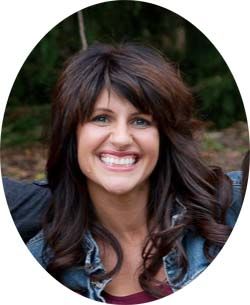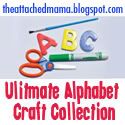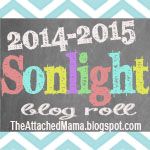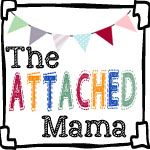This year we have been going through the Sonlight P4/5 program which gives preschoolers a great introduction to our world through the use of literature. We are loving the program, and I highly recommend it. We are also big fans of the Five in a Row (FIAR) books, so we have incorporated those into our day too.
The existing P4/5 schedule is great as is. However, I have modified it slightly for our use, and I wanted to share how we are using the program. What I have done is to pull out all of the wonderful world culture stories in the Sonlight P4/5 program and grouped them by geographic region. This gives us time to fully immerse ourselves in the various cultures we are studying. So instead of skipping all around the globe, we get to spend a few weeks completely devoted to one culture/region. This gives us time to do all sorts of fun things together as a family. We might prepare and taste some traditional foods from the part of the world we are studying. Sometimes we might do a craft project together using inspiration from artists who live in that part of the world. Or, at other times, we might take a few days to learn some phrases from the language spoken in that part of the world. Basically---it gives us the time to really let all of those cultures sync in as we "read around the globe". I have also found that organizing the stories this way allows my very young children to really grasp the differences in cultures and people groups that can be found around the world. When we were jumping all around the globe, this didn't sync in as much.
In case anyone else is interested in reading around the world, I wanted to share our list of stories. You will notice that we have included a lot of other books besides those included in the Sonlight P4/5 program. Many of them are used in the Five in a Row program (another favorite of mine)...others are just good books that you can check out from your library.
How to use this study:
1. Read through the stories at your own pace. Use the sheet provided as a checklist to track your progress.
2. As you are reading, feel free to weave in some craft projects, music, language activities, recipes, or hands-on projects into your study. Do this as you have the time or your children are interested.
A NOTE ON PACING: Included in this list are 166 readings. That may seem like a huge amount, but I have found that this is a good number to fill up a typical school year of 180 days. I personally make it a goal to read about a story per day. With holidays and other interruptions, this usually works out pretty well. Some days we read more, some days less. I always suggest reading as your children are interested and going at their own pace.
Book List for this study:
Around the World in 80 Tales, by Saviour Pirotta, Illustrated by Richard Johnson
Usborne Stories from Around the World, Retold by Heather Amery, Illustrated by Linda Edwards *
The Lion Storyteller Bedtime Book, by Bob Hartman and Krisztina Kallai Nagy *
Antarctic Antics: A Book of Penguin Poems by Judy Sierra
New Toes for Tia by Larry Dinkins *
The Gods Must Be Angry by Sheila Miller and Ian Murray *
Stories from Africa, Written by SIM missionaries *
Very Last First Time, by Jan Andrews **
A New Coat for Anna, by Harriet Ziefert **
Papa Piccolo by Carol Tally **
Another Celebrated Dancing Bear by Gladys Scheffrin-Falk **
Grandfather’s Journey by Allen Say **
The Glorious Flight by Alice and Martin Provensen (France and English Channel) **
How to Make an Apple Pie and See the World by Marjorie Priceman **
Giraffe That Walked to Paris by Nancy Milton **
Mirette on the High Wire by Emily Arnold McCully **
A Pair of Red Clogs by Masako Matsuno **
Wee Gillis by Munro Leaf **
The Story of Ferdinand by Munro Leaf * **
The Story of Ping by Marjorie Flack *, **
The Clown of God by Tomie dePaola **
Mr. Gumpy’s Motor Car by John Burningham **
---
* A Sonlight book
** A FIAR Book
General World Geography Books to Use for Reference:
Global Art: Activities, Projects, and Inventions from Around the World by MaryAnn Kohl-
This is a great book to own, but most libraries will also have a copy of this that you can check out. There are lot of great projects that you can use at your discretion as you study the various cultures and countries. The projects are all rated by degree of skill...and I have found that many of the lowest rated projects are very appropriate for four and five year old children.
Children Just Like Me: A Unique Celebration of Children Around the World by Anabel Kindersley
This is a great book for showing traditional clothing that other children wear around the world. This is also a fairly common book and most libraries will have a copy of this.
A Child's Introduction to the World Geography, Cultures, and People - From the Grand Canyon to the Great Wall of China by Heather Alexander
I am a big fan of the "Child's Introduction" series of books. So when a fellow sonligher recommended this book I was anxious to check it out. Our library didn't have a copy of it, so I had to bite the bullet and purchase it. I am glad I did. This is a great reference book with tons of ideas to incorporate into your study of the world. This book will really grow with the child and you will probably find you are using it for years to come.
Also, try to get your hands on a nicely illustrated multi-cultural cookbook made just for kids. I would suggest hitting your local library and searching for a book there. There are many, many great versions of these types of books out there. If that is not possible, here are some to consider:
Kids Around the World Cook!: The Best Foods and Recipes from Many Lands by Arlette N. Braman
Around the World Cookbook by Abigail Johnson Dodge
Another good resource to check out is some traditional music from the culture you are reading about. This is another resource that I would utilize the library for if at all possible. I highly recommend the
Putumayo Presents Series of world music CDs. Another great resource is the Wee Sing Around the World CD.
Another resource is the continent song. We started off our study by learning the 7 continents on the globe. At first the kids just memorized the words to this song, however, eventually, they learned to start locating the continents on the globe. After you get the continents down, make it a goal to learn the various oceans.















